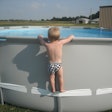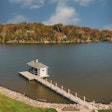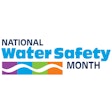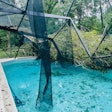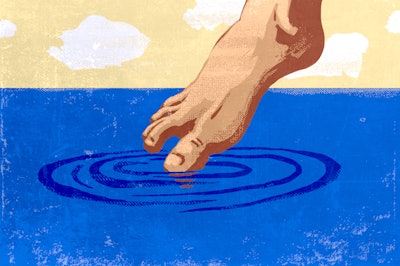
Two out of three adults in the U.S. are afraid of deep water.
I first heard that stat by way of a presentation at the 2008 World Aquatic Health Conference, and it still makes me stop and think. This pervasive fear must have major negative implications for the swimming pool and aquatics industries. After all, if people are afraid to go in water over their head, they are almost certain to avoid purchasing a swimming pool or using a commercial or public aquatic facility. There really can be no doubt that having a population where a huge percentage of people are afraid of deep water is bad for businesses and organizations that rely on large numbers of people embracing aquatic exercise, play and recreation.
One caveat might be found in the large numbers of builders who report that they are designing and building more and more all-shallow pools, and perhaps those designs do represent an incremental solution to the problem. Nonetheless, it is reasonable to believe that people who fear water, for any reason, are less likely seek it out than those who are comfortable in it.
RELATED: Documentary Seeks to Eliminate Fear of Water
In hope of a possible solution, I've just been reading about a learn-to-swim school, Orca Swim School in Seattle, that has adopted an approach designed specifically for overcoming this fear. It’s called the Miracle Swimming method, a trademarked program that focuses on moving comfortably in water while being able to breathe and rest with ease. Perhaps it’s an obvious point, but it strikes me that the perfect place to conduct that or any other type of program that teaches swimming, comfort and safety is in a swimming pool itself.
As a lifelong water enthusiast I know the feeling of being afraid in deep water, but it’s always been in the ocean, rivers and lakes — never a pool. It’s human nature; if we don’t know what's beneath us, fear takes hold when you come in contact with plant material, floating debris or heaven forbid some type of aquatic animal. The force of sometimes-unpredictable currents, tides and waves can also contribute to that fear. But you don’t have to be Jacques Cousteau to know that in a pool, none of those factors exist. I learned to swim in swimming pools before I was five and it was precisely the comfort level gained in those welcoming bodies of water that in turn gave me the confidence as a swimmer to overcome the anxiety that can occur in natural waters.
In effect, when we think about the fear of swimming, pools are a key element in teaching people to become comfortable in water and it is the pool industry itself that stands to gain the most from successfully combating such fears — besides the once-fearful swimmers themselves who can enter a new world of aquatic activity. All of that is why I fervently believe that those of us who have a vested interest in the popularity of the aquatic lifestyle have everything to gain by promoting, supporting and even funding programs that teach people to enjoy rather than fear the deep end of the pool.































